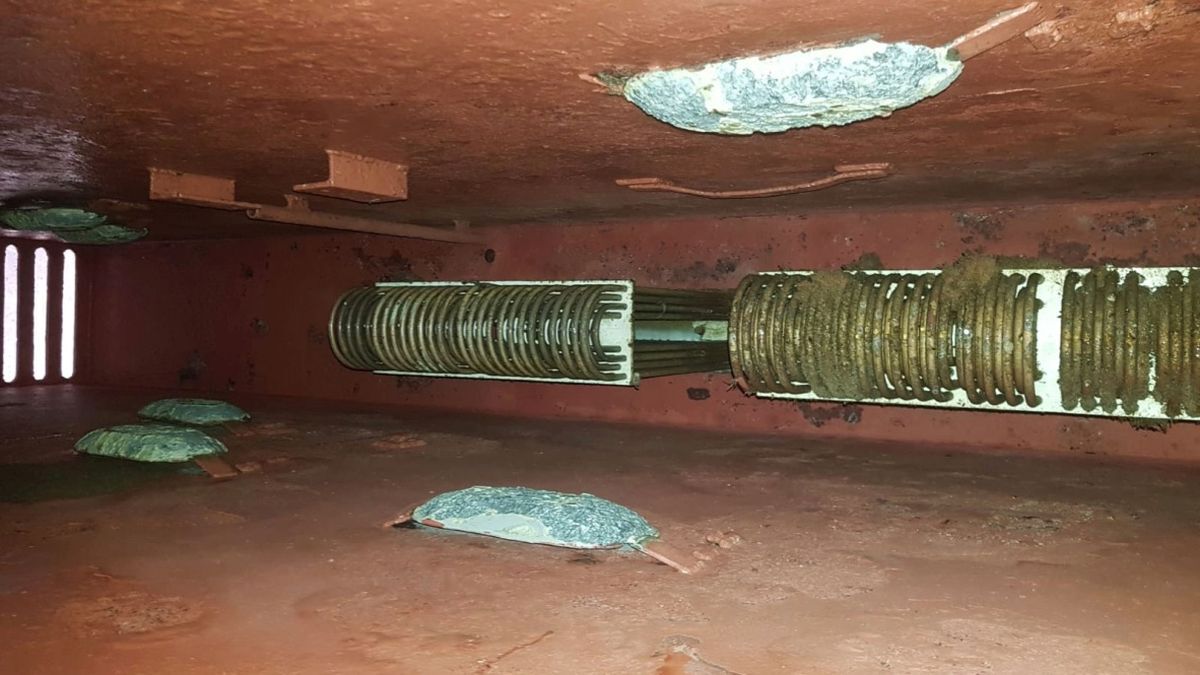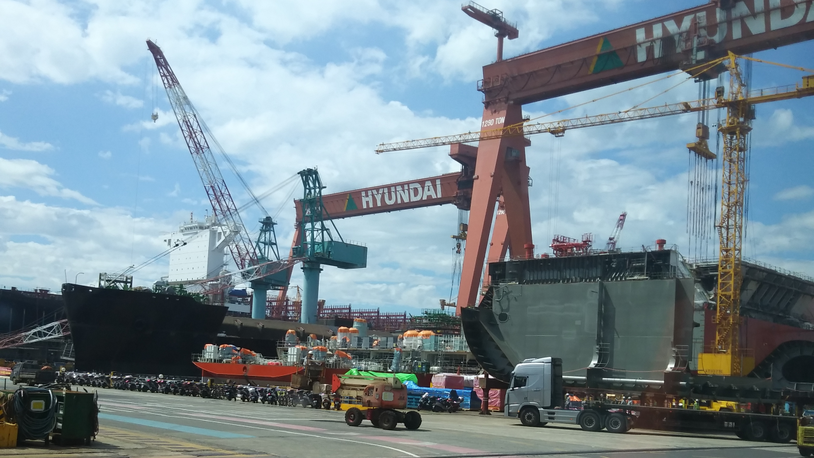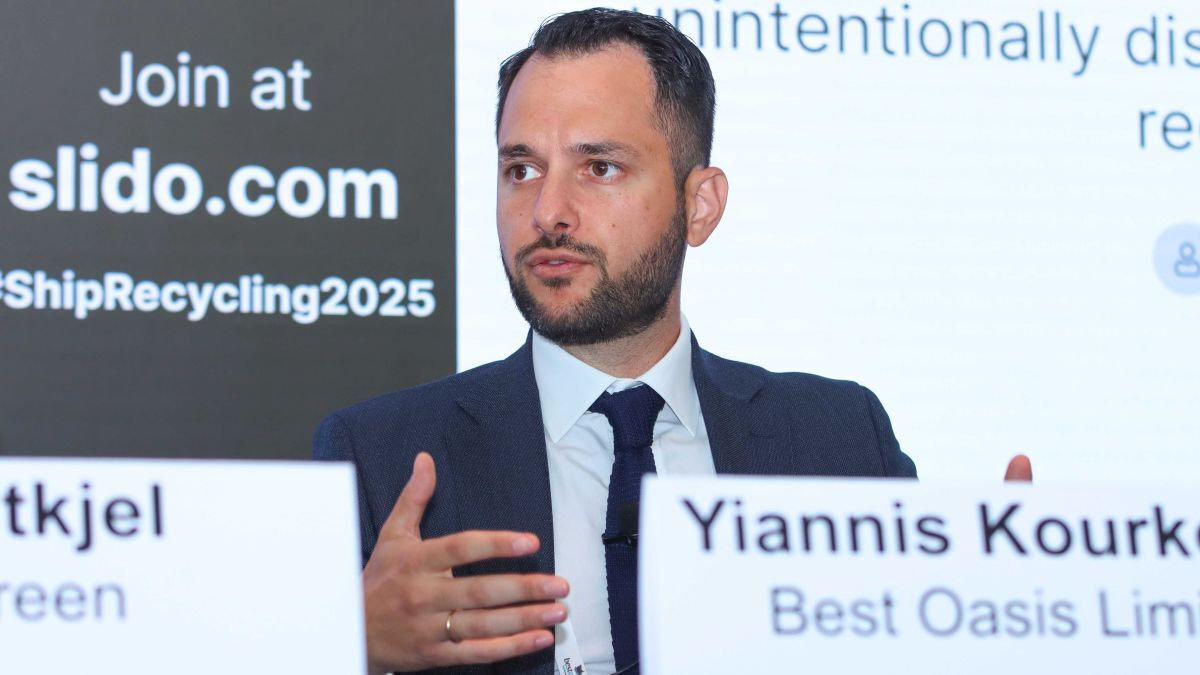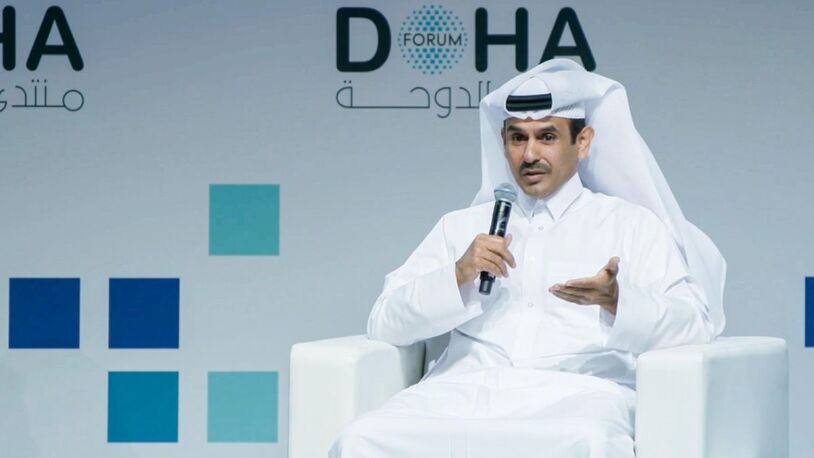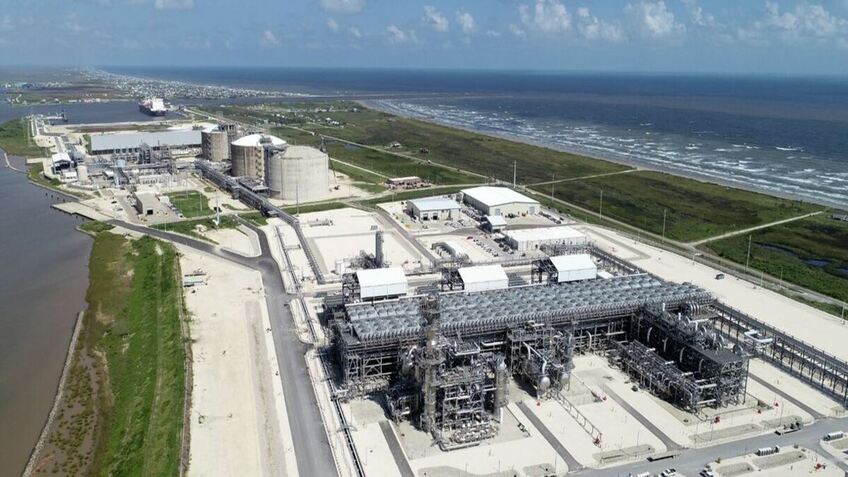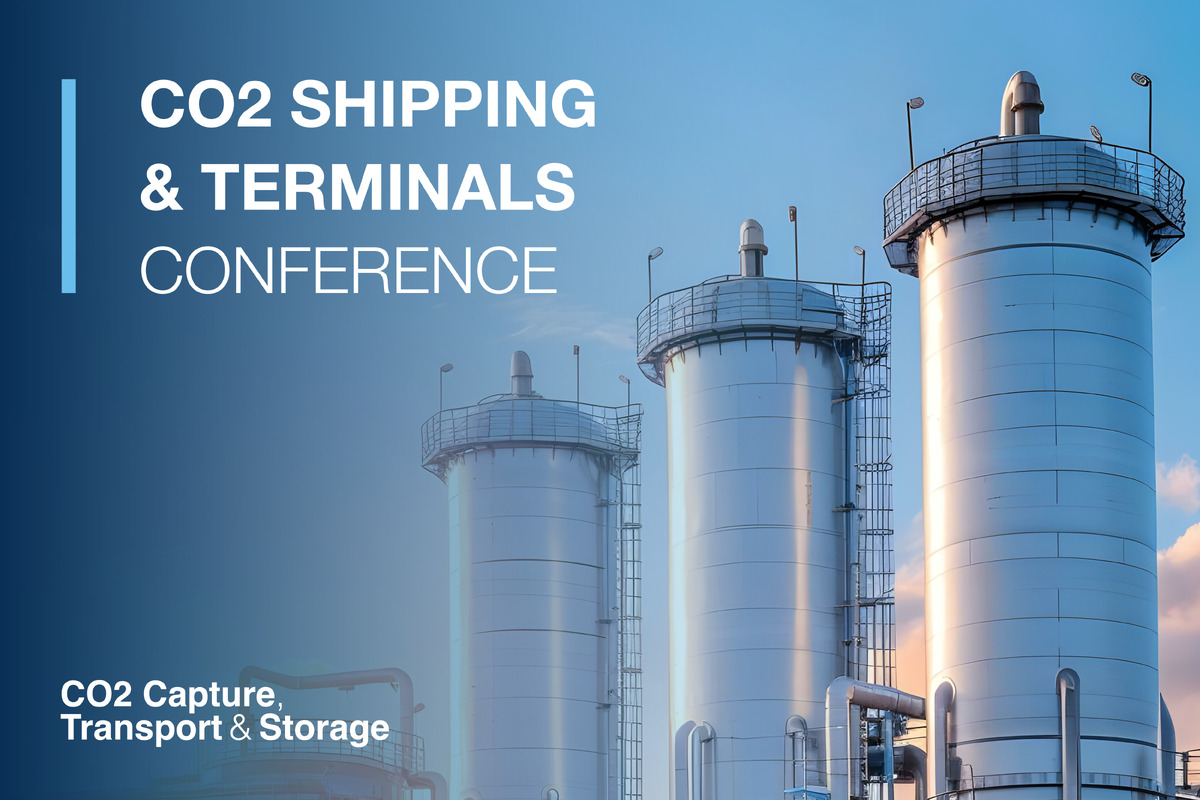Business Sectors
Contents
Mozah launches Q-max era 1
The world’s largest LNG carrier by a wide margin has just been named at Samsung. Qatar will have 14 ships of this Q-max size in service by 2010
The world’s largest LNG carrier by a wide margin has just been named at Samsung. Qatar will have 14 ships of this Q-max size in service by 2010
Ten months after gathering in Korea for the naming of the first 216,000m3 Q-flex ships, dignitaries returned to the country on 11 July 2008 to similarly welcome Mozah, at 266,000m3 the largest LNG carrier ever built. Constructed by Samsung Heavy Industries (SHI), the ship is named after Sheikha Mozah Bint Nasser Al Missned, the wife of the emir of Qatar, who was guest of honour at the shipyard ceremony.
Mozah is the first of 14 ships of the so-called Q-max size that are being built to carry cargoes from the large new 7.8 million tonnes per annum (mta) LNG ‘Super Trains’ under construction at Ras Laffan in Qatar. The Q-max fleet will be complemented in the transport of LNG from the six new Super Trains by a fleet of 31 Q-flex size ships of approximately 216,000m3. A total of 18 of the Q-flex ships have already been completed, by the Korean yards of SHI, Hyundai Heavy Industries (HHI) and Daewoo Shipbuilding & Marine Engineering (DSME). All 14 of the Q-max ships will be built by SHI and DSME.
Mozah is also the first LNG carrier wholly owned by Qatar Gas Transport Co Ltd (Nakilat). Nakilat is a part owner of the 18 Q-flex ships delivered to date, as well as of nine conventional size LNG carriers engaged in the transport of Qatari exports. However, from Mozah onwards, most of the ships still to be delivered, i.e. the remaining 13 Q-max ships and 11 of the 13 remaining Q-flex ships, will be 100 per cent owned by Nakilat.
The 25 wholly owned Q-flex and Q-max vessels are necessitating a total investment of US$7.3 billion by Nakilat. The company was established in 2004 by the state of Qatar to provide shipping and marine-related services. It is configured as a joint stock company, 50 per cent owned by its founding shareholders and 50 per cent by the public.
On completion of the final new ship in 2010 the Nakilat LNG carrier fleet will stand at 54 ships, comprising the nine conventional, 31 Q-flex and 14 Q-max ships. The fleet is destined to play a key role in the transport of Qatari LNG to world markets. With exports of 31 mta, Qatar is already the world’s leading exporter of LNG. The completion of the six Super Trains will boost export capacity to 77 mta by 2011.
The economy of scale benefits offered by Qatar’s Super Trains can only be fully realised through the use of large LNG carriers. The key principals behind development of the designs for the Q-flex and Q-max ships are ExxonMobil and Qatar Petroleum. The two companies are, in turn, the leading partners in Qatargas 2 and RasGas 3, the inaugural Super Train projects. As the effective charterers of the majority of the Q-flex and Q-max ships, through their participation in Qatargas 2 and RasGas 3, ExxonMobil and Qatar Petroleum assembled a team of experts, led by their own representatives, to select the design, prepare the specifications and supervise the construction of LNG carriers sized to meet the needs of the Super Train projects.
Supervision of the construction of the Q-flex and Q-max ships at the three Korean yards comes under the remit of the Qatargas site supervision teams. The focus of these busy groups is to ensure that all the large Qatari vessels are constructed safely, on schedule and to the highest quality standards. It was pointed out at the Mozah naming ceremony how the construction of the first Q-Max vessel met all three criteria. Over 1 million, incident-free man-hours were logged in completing SHI Hull No 1675.
ExxonMobil and Qatar Petroleum have been ably assisted in the realisation of this fleet of LNG carriers of unprecedented size and capability by the Korean builders of the vessels, i.e. HHI, SHI and DSME, and by the three societies classing the vessels, i.e. ABS, DNV and LR. The Q-flex LNG ships have a cargo-carrying capacity which is 40 per cent greater than the largest conventional size LNG carrier currently in service, while the Q-max ships are 70 per cent larger.
Suppliers of ship equipment have also played a key role in the development of these large, new ships. For several types of cargo-handling equipment, as typified by the Ebara cargo pumps and the Rosemount radar level gauges provided for Mozah, the Q-flex and Q-max ships have presented only a relatively modest challenge, as it has been a case of scaling up existing technologies.
However, some new technologies have been introduced for the first time with the Q-flex and Q-max ships. The most notable piece of new equipment is the onboard cargo reliquefaction plant. Because conventional low speed diesel engines have been chosen as the propulsion system for these large gas carriers, an independent means of reliquefying the cargo boiloff and returning it to the tanks must be provided. In contrast, conventional size LNG ships, whether steam turbine or dual-fuel diesel engine (DFDE)-powered, have the ability to utilise the bulk of the cargo boiloff to power the ship.
Hamworthy is providing the reliquefaction plants for the Q-flex ships and Cryostar those for the Q-max vessels. The development of large, powerful, shipboard reliquefaction units for these ships, utilising experience gained with land-based plant technology, has required a steep learning curve for all concerned.
After reviewing the options, the owners, charterers, builders and engine manufacturers for the Q-flex and Q-max ships opted for a propulsion system based on twin engines, shafts, propellers and rudders. Because LNG is a low-density cargo, LNG carriers are relatively shallow-draught ships. For example, although the Q-max LNG carriers have an overall length and breadth similar to those of a 290,000 tonnes deadweight very large crude carrier (VLCC) able to transport 2 million barrels of oil, their draught is only 12m, in contrast to 20.5m for a VLCC.
The twin propeller arrangement on the Q-flex and Q-max LNG ships ensures good propeller immersion while the wide beam and shallow draught of the vessels enable access to ports and terminals where draught restrictions prevent the passage of especially large ships. The twin engine arrangement also provides an element of propulsion system redundancy.
The engines utilised on the Q-flex and Q-max ships are MAN B&W low speed diesel engines manufactured by Doosan in Korea under licence. Nakilat points to the environmental and commercial advantages of utilising diesel-powered LNG carriers with high cargo-carrying capacity, stating that Q-max ships consume about 40 per cent less energy per cargo tonne-mile compared to conventional size steam turbine ships and also give off 40 per cent less emissions. According to Nakilat, Q-max ships can deliver LNG for about 20 per cent less cost than is possible with conventional carriers.
The technical management of all 25 of the Q-flex and Q-max ships that will be fully owned by Nakilat, including Mozah, is the responsibility of Shell International Trading and Shipping Co (STASCO). Under the master services agreement signed by Nakilat and Shell, STASCO will assist the Qatari owner in managing its LNG carrier fleet and recruiting and training seafarers. Further, the partnership agreement calls for Nakilat to assume full responsibility for the management of the fleet within an eight-12 year timeframe.
Mozah is scheduled for formal handover on 25 August 2008, almost exactly one year to the day after her keel was laid and 16 months after the first steel was cut. Before the end of the year five more Q-max ships will have been delivered by SHI and DSME. These first six ships are all destined to carry LNG produced by Qatargas 2 Train 5, one of the Super Trains and a joint venture project involving Qatar Petroleum, ExxonMobil and Total. LNG
Related to this Story
Events
Reefer container market outlook: Trade disruption, demand shifts & the role of technology
Asia Maritime & Offshore Webinar Week 2025
Marine Lubricants Webinar Week 2025
CO2 Shipping & Terminals Conference 2025
© 2024 Riviera Maritime Media Ltd.



